Rattan, a naturally durable and aesthetically pleasing material, serves as the foundation for crafting various furniture and decorative items. This article offers a step-by-step guide on how to make rattan placemats create practical and stylish food placemats for your dining table.
With just a few essential tools and a commitment to the process, you can embark on the journey of crafting unique and imaginative rattan food placemats, adding a personal touch to your dining experience.
Contents
1. How to make rattan placemats?
Rattan is a type of climbing plant that is commonly used to create various handmade products, including table mats. To craft table mats from rattan, you’ll need to prepare the following materials and tools: dried rattan, scissors, twine, a sewing needle, a staple gun, and lining fabric.
The steps are as follows:
Step 1
In the first step, it’s crucial to select dried rattan that aligns with the desired dimensions of your diy rattan placemats. The choice of rattan should consider both its length and thickness, ensuring it meets the specifications for crafting the ideal mat.
Once chosen, the rattan is then evenly cut into horizontal strands, laying the foundation for the subsequent weaving process.
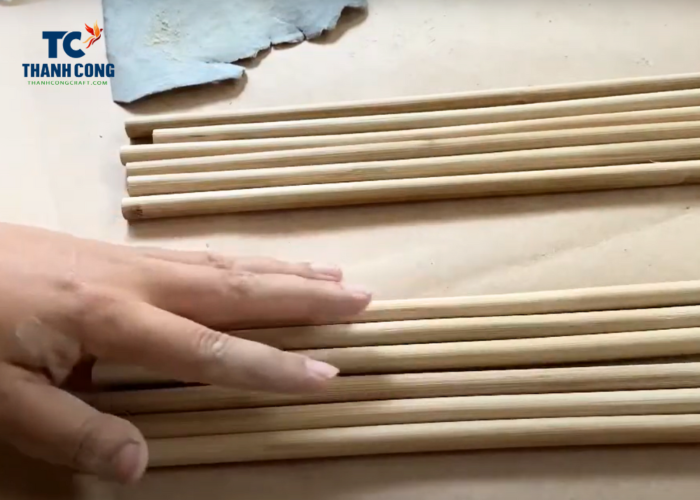
Step 2
In the second step, assemble the horizontally cut rattan strands by stacking them in either a square or circular configuration, depending on the desired shape of your rattan placemats.
Securely tie the corners of the square or circle using a rope, ensuring a firm and stable foundation for the weaving process that follows.
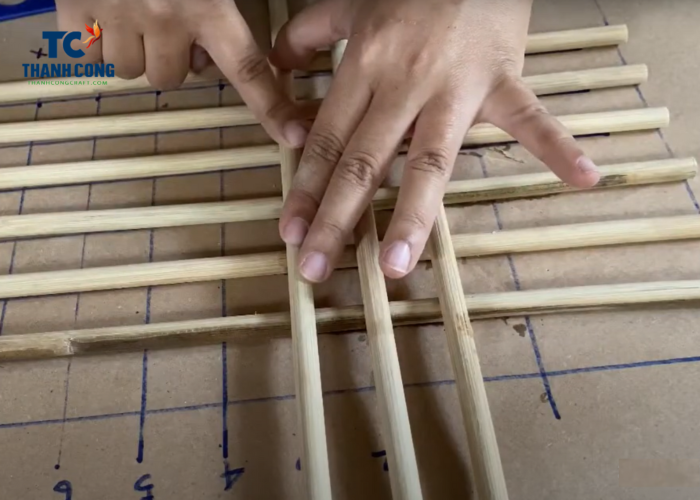
Step 3
Employ a sewing needle and rope to intricately stitch the rattan strands together in a vertical pattern. This stitching process results in a cohesive and seamless layer of rattan, forming the body of the table mat.
Consider stitching in either an X or Z shape not only to enhance durability but also to add an aesthetic dimension to the final product.
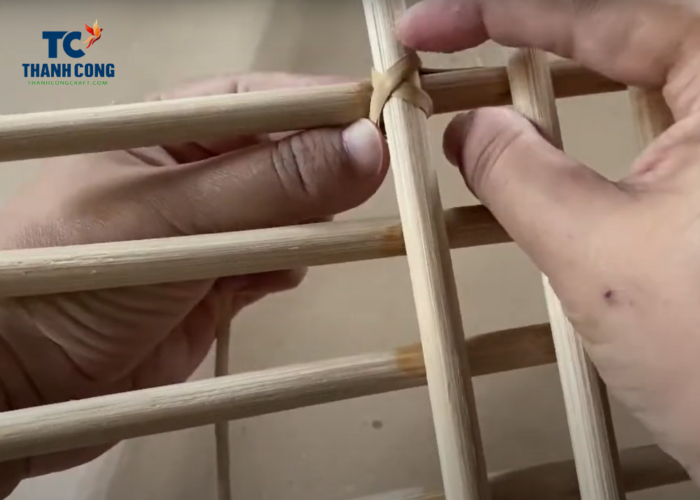
Step 4
Cut a lining fabric to match the size of the rattan layer you’ve meticulously stitched. Employ a nail gun to secure the lining fabric to the bottom of the rattan layer, effectively concealing the stitches and enhancing the overall softness and comfort of the table mat.
This additional layer not only serves a practical purpose but also contributes to the mat’s aesthetic appeal.
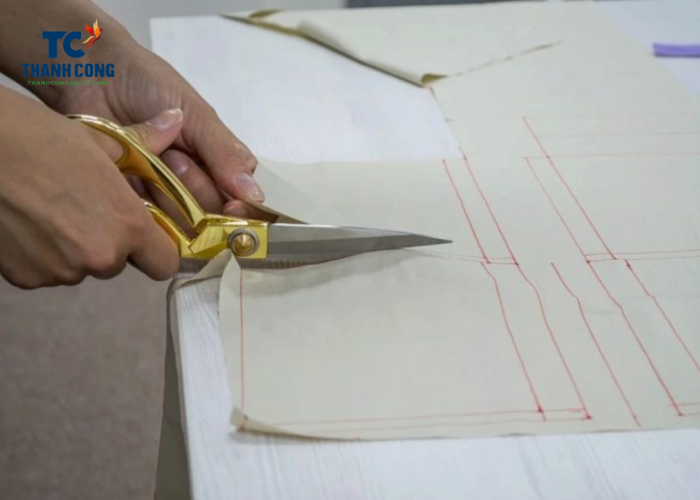
Step 5
Trim away any surplus sections of both the rattan and lining fabric to achieve a neat and refined appearance. Following this, thoroughly clean the table mat, ensuring it is free from any debris or residue. Allow the mat to dry completely, concluding the crafting process and leaving you with a beautifully handcrafted table accessory.
You have completed making a table mat from rattan. You can use your product to decorate your dining table or give it as a gift to your relatives and friends.
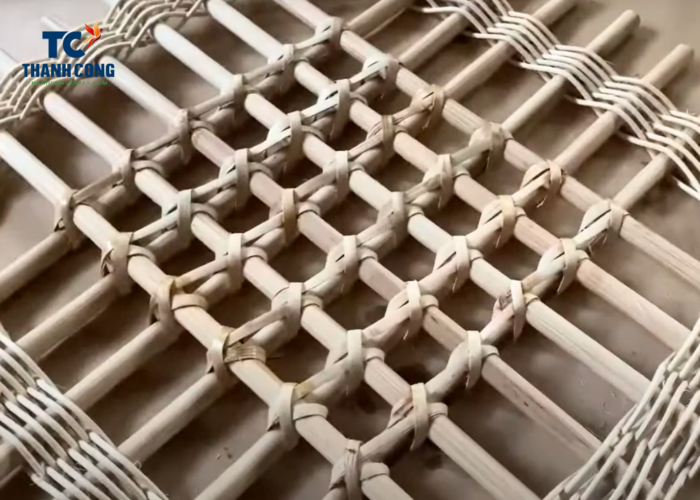
2. FAQs
2.1 Are rattan placemats heat resistant?
Rattan placemats, while providing a natural and stylish addition to your table setting, may not inherently possess high heat resistance. Rattan is a natural material, and exposure to excessive heat can potentially lead to warping, discoloration, or damage over time.
If you intend to use rattan placemats in settings where they might come into contact with hot dishes, it’s advisable to take precautionary measures.
- Choose high-quality placemats that have been treated with preservatives to enhance durability and resist pests, moisture, and mold.
- Avoid direct contact of placemats with heat sources such as gas stoves, microwaves, electric kettles, or hot items like pans, pots, and dishes.
- If necessary, you can use additional layers such as fabric, aluminum foil, or plastic to further enhance the safety of the placemats.
- After use, it is recommended to clean the placemats with a damp cloth or a cleaning rag and let them air dry completely before storing. Avoid placing placemats in damp or humid areas, direct sunlight, or near open flames.
2.2 Can you clean rattan placemats?
Cleaning rattan placemats is a straightforward process that ensures the longevity and visual appeal of these natural and stylish table accessories. Begin by removing any loose debris, such as crumbs or dust, by shaking the placemats or using a soft brush.
Next, dampen a soft cloth or sponge with a mild detergent solution or a mixture of water and gentle dish soap. Gently wipe the rattan surface, paying attention to spots or stains. It’s crucial to avoid excessive water to prevent saturation of the rattan. Once cleaned, promptly dry the placemats with a clean, dry cloth to prevent any lingering moisture that could potentially damage the material.
Importantly, steer clear of harsh chemicals, abrasive cleaners, or prolonged soaking in water, as these can adversely affect the rattan. Consistent and gentle cleaning practices help preserve the beauty and integrity of rattan placemats, ensuring they remain both functional and aesthetically pleasing.
Finally, the “how to make rattan placemats?” is not just a question; it is an opportunity for you to showcase your creativity and create handmade items that reflect your personality in your daily living space. Try it out and experience the joy of crafting something with your own talented hands.
If you have any further questions, don’t hesitate to send thanhcongcraft an email us at info@thanhcongcraft.com or message us at WhatsApp: +84967485411. Hope to serve you soon! Best regard!












